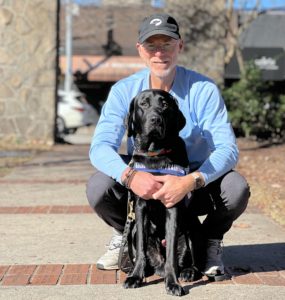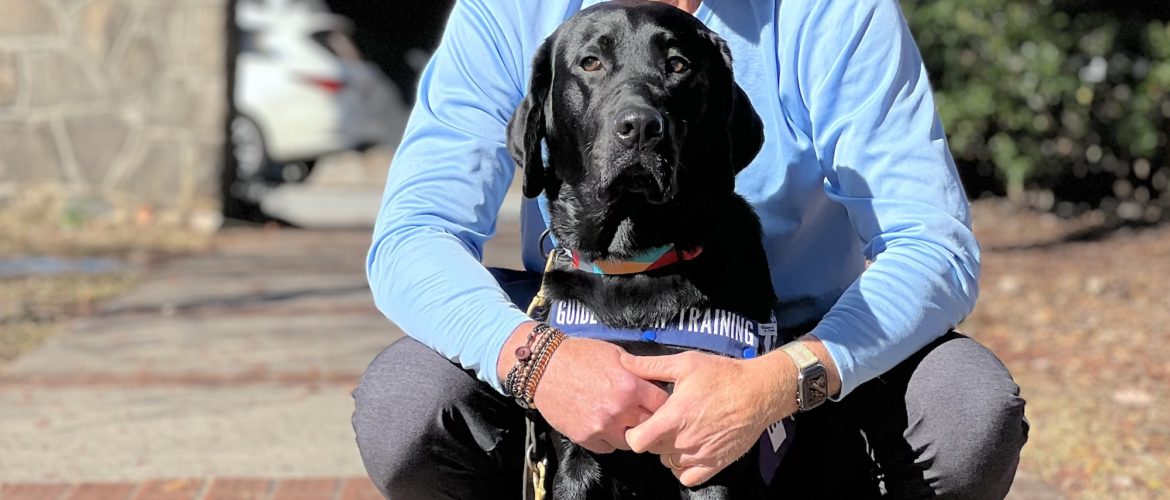 Malcolm Miller recalls clearly that he was driving with his wife, son and two dogs in the car, stopping at a red light to enter the interstate, and then his wife saying, “Malcolm, go – the light turned green.”
Malcolm Miller recalls clearly that he was driving with his wife, son and two dogs in the car, stopping at a red light to enter the interstate, and then his wife saying, “Malcolm, go – the light turned green.”
But that’s it.
“I blacked out. I don’t remember anything,” Malcolm, now 64, says about the stroke he suffered four years ago.
It left him barely able to speak or move and forced an early retirement. But he was back working out at the gym within two months, because he knew he’d have to fight hard to regain his function. A lifelong athlete, Malcolm enjoyed an active life and didn’t want to give up any more than he’d have to because of the stroke.
Plus, there’s his volunteer work as a trainer for service dogs. (That’s Malcolm with one of his pups, JJ, above.)
“I wasn’t moving well. I was plenty weak,” he says. “But I knew I had to get in there and exercise and do what I could do.”
With February designated each year as national heart month in the U.S., Canada and the U.K., stories like Malcolm’s are especially inspirational.
Heart disease, including stroke, remains the No. 1 killer. Exercise and eating right are key to reducing your chances of heart disease.
Exercise as Recovery
For Malcolm, his recovery improved a little bit each day, with his exercise playing a key role.
Now, he looks like a fit, active retiree, lifting weights at the gym and participating in community runs. He walks with a slight limp that disappears when he runs. His speech sometimes is challenging but his brain health is excellent.
Part of Malcolm’s joy for living comes from his volunteer work as a puppy raiser for Southeastern Guide Dogs.
He takes a black labrador puppy into his home for about a year, “teaching it good house manners, socialization, and basic obedience, returning it back to the true experts at Southeastern where the real training begins.”
Malcolm even likes to bring his dog with him to the gym.
“Without a dog, I’m a fish out of water.”
Early Signs of Stroke
The day of his stroke, Malcolm had been playing baseball. He recalls the sunlight hitting his eyes “weird” while playing and someone suggested he drink water.
Otherwise, he had no warning.
The American Stroke Association says these are some stroke symptoms:
- Numbness or weakness of face, arm, or leg, especially on one side of the body
- Confusion, trouble speaking or understanding speech
- Trouble seeing
- Trouble walking, dizziness, loss of balance or coordination
- Severe headache with no known cause
The organization promotes the F.A.S.T. acronym to help spot early signs.
- F = Face drooping on one side
- A = One arm weak or numb
- S = Speech difficulty
- T = Time to call 911
For more information, visit the American Stroke Association.
Holly Kouvo is a personal trainer, functional aging specialist, senior fitness specialist, brain health trainer, writer, and speaker.

